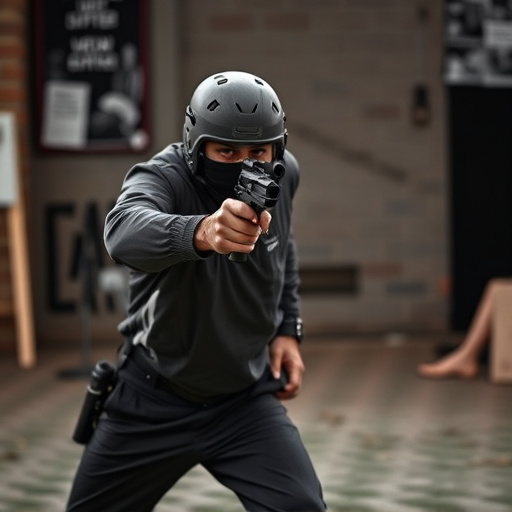When considering high-powered stun guns for sale, understanding voltage ranges (from 400,000V to 1,200,000V) is crucial. Higher voltages deliver stronger shocks, overcoming resistance from clothing or weather. Compare average and peak voltage to ensure a powerful, reliable device capable of effectively incapacitating targets.
In today’s world, self-defense tools like high-powered stun guns for sale are gaining popularity. Understanding the voltage range of these devices is crucial for both effectiveness and safety. This article delves into the intricacies of stun gun voltage, exploring its definition, factors influencing requirements, and legal considerations. We also discuss key safety specs for high-output stun guns, including power output, energy delivery mechanisms, and maintenance guidelines, empowering users to make informed decisions.
- Understanding Stun Gun Voltage Ranges
- – Definition of voltage and its role in stun gun effectiveness
Understanding Stun Gun Voltage Ranges

Stun guns are designed to incapacitate an assailant temporarily, and their effectiveness is closely tied to voltage. Understanding stun gun voltage ranges is crucial when considering high-powered stun guns for sale. These devices typically operate within a specific voltage range, with higher voltages generally resulting in more powerful shocks. The key measurements to look out for are the average voltage and peak voltage.
Average voltage refers to the steady electrical charge delivered by the stun gun, while peak voltage represents the maximum force of the shock. High-powered models often boast peak voltages exceeding 1000 volts, ensuring they can overcome resistance from clothing or weather conditions. When shopping for high-powered stun guns, compare these voltage specs to ensure you get a device capable of delivering an effective and powerful jolt when needed.
– Definition of voltage and its role in stun gun effectiveness

Voltage is a critical parameter that determines the stun gun’s effectiveness, especially in high-powered stun guns for sale. It represents the electrical potential difference between two points and is measured in volts (V). In the context of stun devices, voltage plays a pivotal role as it dictates the amount of energy delivered to the target, ultimately causing muscle disruption and temporary incapacitation. A higher voltage typically results in a more intense shock, ensuring swift and effective neutralization.
Stun guns are designed to emit a powerful electrical discharge that overloads the body’s nerve system, leading to loss of balance and strength. The voltage range in modern stun devices varies, but it generally falls between 400,000V to 1,200,000V. This wide range allows users to choose devices suited to specific needs, whether for personal safety or law enforcement applications. Understanding voltage is essential for ensuring the stun gun’s performance and safety, especially when considering high-powered options available in the market.
When considering a high-powered stun gun for sale, understanding the voltage range is crucial. The stun gun’s voltage directly impacts its effectiveness in neutralizing an assailant. Higher voltage levels generally mean faster immobilization and increased safety for the user. However, it’s essential to prioritize safety and follow all guidelines and legal requirements when owning and using such devices. Always remember that proper training and awareness are key to responsible stun gun ownership.
